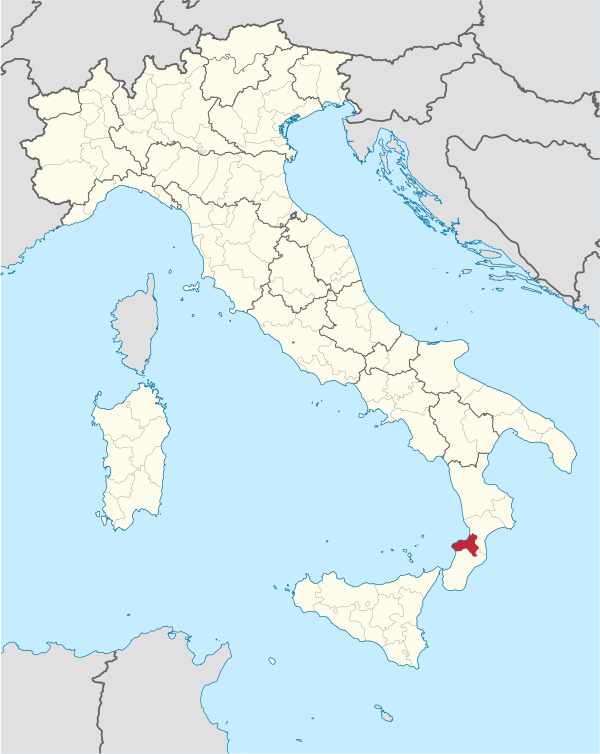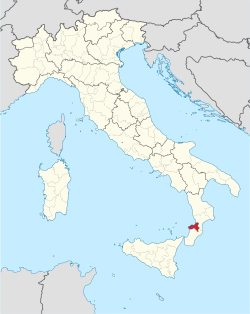Top Qs
Timeline
Chat
Perspective
Province of Vibo Valentia
Province of Italy From Wikipedia, the free encyclopedia
Remove ads
The province of Vibo Valentia (Italian: provincia di Vibo Valentia; Vibonese: pruvincia i Vibbu Valenzia) is a province in the region of Calabria in Italy, Its capital is the city of Vibo Valentia and its vehicle licence plate code is VV.[4] The province has an area of 1,150.64 square kilometres (444.26 sq mi) (7.6% of the total surface of Calabria),[1] and a population of 150,197 as of 2025.[2] There are 50 municipalities (comuni) in the province.[5]
Remove ads
History
It was first settled by Italic tribe the Sicels and Vibo Valentia was established as a city in the 6th or 7th century, known as Hipponion by the Greeks of Messina and Reggio. Following this, the city was later recolonised by people from town Locri in the region of Calabria.[6] Dionysius I of Syracuse had the city of Hipponion destroyed, and authority of the city subsequently passed to Ancient Carthage, tribe Bruttii, Greek Agathocles of Syracuse, and then the Locrians, before being conquered by ancient Rome in around 230 BCE. In around 400 CE it was attacked repeatedly. Frederick II, Holy Roman Emperor had the town rebuilt in the 13th century, and in 1284 it passed to the Ruffo family. Ferdinand I of Naples had a fort constructed in Pizzo Calabro in 1486.[6]
The current province was set up by a national law of 6 March 1992, which came into effect on 1 January 1996, and formerly part of the province of Catanzaro.[7][8]
In June 2010 a dormant volcano was discovered off the coast of the province on the line of the fault that led to the 1905 Calabria earthquake.[9] It is a mountainous province and is situated on the Tyrrhenian Sea.[10]
Remove ads
Government
Municipalities
- Acquaro
- Arena
- Briatico
- Brognaturo
- Capistrano
- Cessaniti
- Dasà
- Dinami
- Drapia
- Fabrizia
- Filadelfia
- Filandari
- Filogaso
- Francavilla Angitola
- Francica
- Gerocarne
- Jonadi
- Joppolo
- Limbadi
- Maierato
- Mileto
- Mongiana
- Monterosso Calabro
- Nardodipace
- Nicotera
- Parghelia
- Pizzo
- Pizzoni
- Polia
- Ricadi
- Rombiolo
- San Calogero
- San Costantino Calabro
- San Gregorio d'Ippona
- San Nicola da Crissa
- Sant'Onofrio
- Serra San Bruno
- Simbario
- Sorianello
- Soriano Calabro
- Spadola
- Spilinga
- Stefanaconi
- Tropea
- Vallelonga
- Vazzano
- Vibo Valentia
- Zaccanopoli
- Zambrone
- Zungri
Remove ads
Demographics
As of 2025, there are 151,558 people residing in the province, of whom 49.2% are male and 50.8% are female. Minors make up 15.1% of the population, and pensioners make up 24.2%. This compares with the Italian average of 14.9% minors and 24.7% pensioners.[2]
References
External links
Wikiwand - on
Seamless Wikipedia browsing. On steroids.
Remove ads



